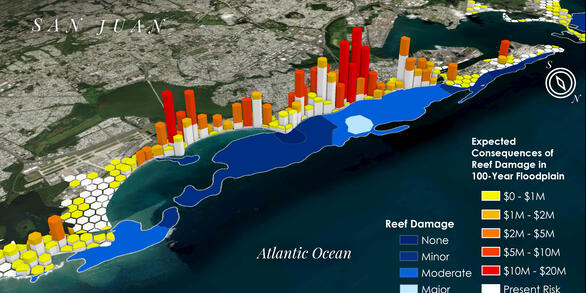Publications
Scientific reports, journal articles, and information products produced by USGS Pacific Coastal and Marine Science Center scientists.
Filter Total Items: 1382
Shallow stratigraphy of the Skagit River Delta, Washington, derived from sediment cores
Sedimentologic analyses of 21 sediment cores, ranging from 0.4 to 9.6 m in length, reveal that the shallow geologic framework of the Skagit River Delta, western Washington, United States, has changed significantly since 1850. The cores collected from elevations of 3.94 to -2.41 m (relative to mean lower low water) along four cross-shore transects between the emergent marsh and delta...
Authors
Eric E. Grossman, Douglas A. George, Angela Lam
Vegetation and substrate properties of aeolian dune fields in the Colorado River corridor, Grand Canyon, Arizona
This report summarizes vegetation and substrate properties of aeolian landscapes in the Colorado River corridor through Grand Canyon, Arizona, in Grand Canyon National Park. Characterizing these parameters provides a basis from which to assess future changes in this ecosystem, including the spread of nonnative plant species. Differences are apparent between aeolian dune fields that are...
Authors
Amy E. Draut
2010 bathymetric survey and digital elevation model of Corte Madera Bay, California
A high-resolution bathymetric survey of Corte Madera Bay, California, was collected in early 2010 in support of a collaborative research project initiated by the San Francisco Bay Conservation and Development Commission and funded by the U.S. Environmental Protection Agency. The primary objective of the Innovative Wetland Adaptation in the Lower Corte Madera Creek Watershed Project is to...
Authors
Amy C. Foxgrover, David P. Finlayson, Bruce E. Jaffe, John Y. Takekawa, Karen M. Thorne, Kyle A. Spragens
Book review: Extreme ocean waves
‘‘Extreme Ocean Waves’’ is a collection of ten papers edited by Efim Pelinovsky and Christian Kharif that followed the April 2007 meeting of the General Assembly of the European Geosciences Union. A note on terminology: extreme waves in this volume broadly encompass different types of waves, includ- ing deep-water and shallow-water rogue waves (alternatively termed freak waves), storm...
Authors
Eric L. Geist
Bathymetry and acoustic backscatter: Elwha River Delta, Washington
Between February 22 and March 3, 2010, scientists from the U.S. Geological Survey (USGS), Pacific Coastal and Marine Science Center (PCMSC), acquired bathymetry and acoustic-backscatter data from the Elwha River Delta, Strait of Juan de Fuca, Washington, under PCMSC Field Activity ID S-6-10-PS. Three ancillary surveys were conducted when sea conditions were too rough for surveying...
Authors
David P. Finlayson, Ian M. Miller, Jonathan A. Warrick
Elwha River dam removal-Rebirth of a river
After years of planning for the largest project of its kind, the Department of the Interior will begin removal of two dams on the Elwha River, Washington, in September 2011. For nearly 100 years, the Elwha and Glines Canyon Dams have disrupted natural processes, trapping sediment in the reservoirs and blocking fish migrations, which changed the ecology of the river downstream of the dams...
Authors
Jeffrey J. Duda, Jonathan A. Warrick, Christopher S. Magirl
Small-scale sediment transport patterns and bedform morphodynamics: New insights from high resolution multibeam bathymetry
New multibeam echosounder and processing technologies yield sub-meter-scale bathymetric resolution, revealing striking details of bedform morphology that are shaped by complex boundary-layer flow dynamics at a range of spatial and temporal scales. An inertially aided post processed kinematic (IAPPK) technique generates a smoothed best estimate trajectory (SBET) solution to tie the vessel...
Authors
Patrick L. Barnard, Li H. Erikson, Rikk G. Kvitek
Floor of Lake Tahoe, California and Nevada
Lake-floor depths shown by color, from light tan (shallowest) to blue (deepest). Arrows on map (C) show orientations of perspective views. A, view toward McKinney Bay over blocks tumbled onto the lake floor by a massive landslide 10s to 100s of thousands of years ago; dark triangular block near center is approximately 1.5 km (0.9 mi) across and 120 m (390 ft) high. B, view toward South...
Authors
Peter Dartnell, Helen Gibbons
Wave exposure of Corte Madera Marsh, Marin County, California: A field investigation
Tidal wetlands provide valuable habitat, are an important source of primary productivity, and can help to protect the shoreline from erosion by attenuating approaching waves. These functions are threatened by the loss of tidal marshes, whether due to erosion, sea-level rise, or land-use practices. Erosion protection by wetlands is expected to vary geographically, because wave attenuation...
Authors
Jessica R. Lacy, Daniel J. Hoover
From ridge to reef—linking erosion and changing watersheds to impacts on the coral reef ecosystems of Hawai‘i and the Pacific Ocean
Coral reef ecosystems are threatened by unprecedented watershed changes in the United States and worldwide. These ecosystems sustain fishing and tourism industries essential to the economic survival of many communities. Sediment, nutrients, and pollutants from watersheds are increasingly transported to coastal waters, where these contaminants damage corals. Although pollution from...
Authors
Jonathan D. Stock, Susan A. Cochran, Michael E. Field, James D. Jacobi, Gordon Tribble
GLORIA sidescan-sonar imagery for parts of the U.S. Exclusive Economic Zone and adjacent areas
In 1983, President Ronald Reagan signed a Proclamation establishing the Exclusive Economic Zone (EEZ) of the United States extending its territory 200 nautical miles from the coasts of the United States, Puerto Rico, the Northern Mariana Islands, and other U.S. territories and possessions. The charter of the U.S. Geological Survey (USGS) places the primary responsibility for mapping the...
Authors
Valerie F. Paskevich, Florence L. Wong, John J. O'Malley, Andrew J. Stevenson, Christina E. Gutmacher
Beaufort Sea deep-water gas hydrate recovery from a seafloor mound in a region of widespread BSR occurrence
Gas hydrate was recovered from the Alaskan Beaufort Sea slope north of Camden Bay in August 2010 during a U.S. Coast Guard Cutter Healy expedition (USCG cruise ID HLY1002) under the direction of the U.S. Geological Survey (USGS). Interpretation of multichannel seismic (MCS) reflection data collected in 1977 by the USGS across the Beaufort Sea continental margin identified a regional...
Authors
Patrick E. Hart, John W. Pohlman, T.D. Lorenson, Brian D. Edwards



